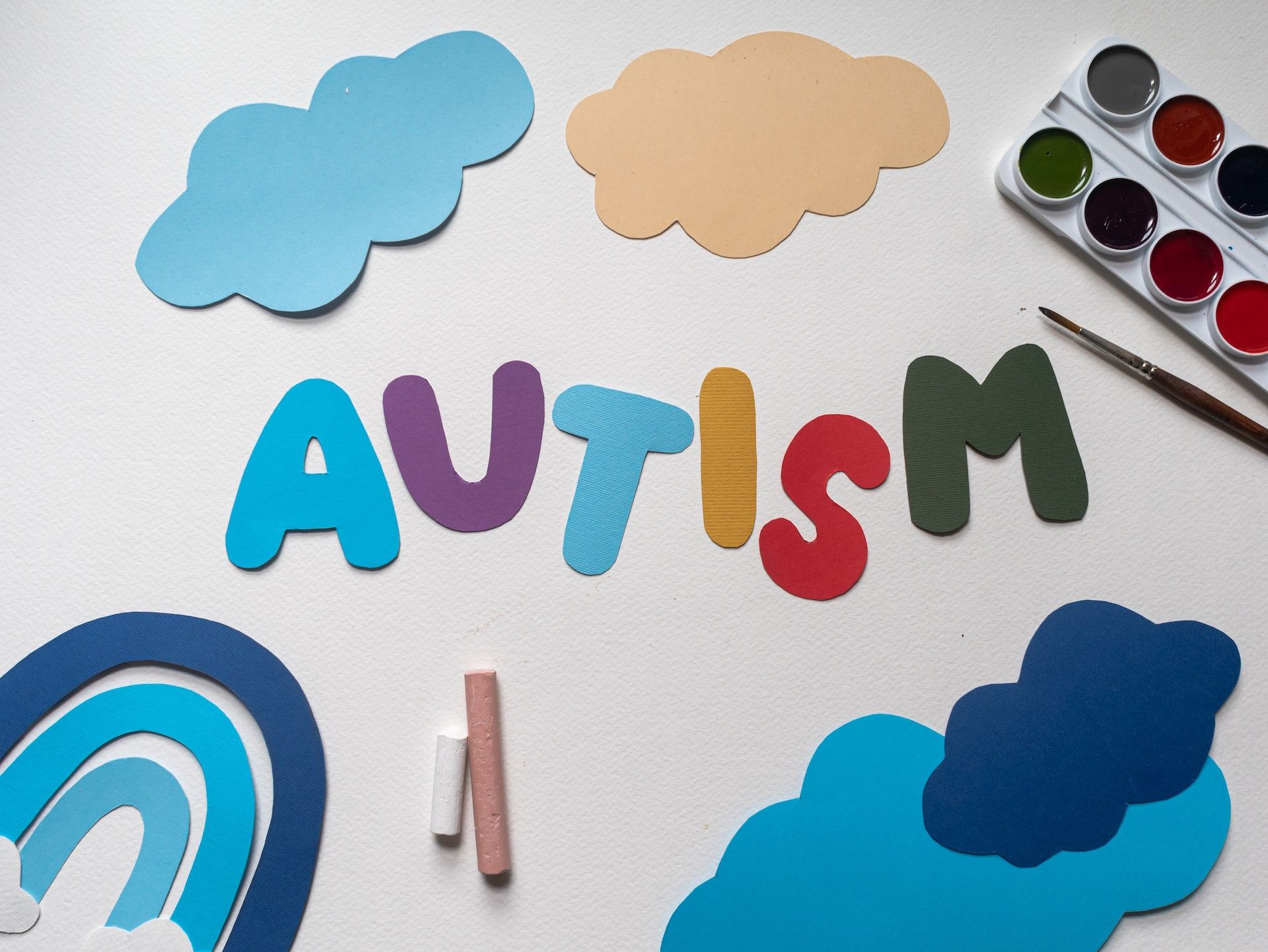What is Autism Spectrum Disorder?
What is Autism Spectrum Disorder?
Autism Spectrum Disorder (ASD) is a neurological and developmental condition that affects how people behave, interact, and communicate with others (National Institute of Mental Health, 2022). It is diagnosed in early childhood and continues into adulthood. The Diagnostic and Statistical Manual of Mental Disorders, Fifth Edition (DSM-5) defines ASD as a group of disorders characterized by persistent deficits in social communication and social interaction, along with restricted, repetitive patterns of behavior, interests, or activities (Centers for Disease Control and Prevention, 2016).

What is the DSM-5?
The Diagnostic and Statistical Manual of Mental Disorders, also referred to as the "DSM," is a reference work on illnesses and disorders relating to mental health and the brain. This book was written, edited, reviewed, and published by the American Psychiatric Association (APA) (Cleveland Clinic, n.d.).
The DSM-5 offers concise, in-depth definitions of diseases affecting the brain and mental health. Additionally, it describes and illustrates the symptoms and signs of those conditions. The DSM-5 classifies conditions into categories in addition to describing and discussing each one. This makes it simpler for medical professionals to correctly diagnose illnesses and distinguish them from ones with comparable signs and symptoms (Cleveland Clinic, n.d.).
What are the three main characteristics of ASD?
Social communication difficulties, restricted and repetitive activities, and abnormalities in sensory processing are the three core aspects of ASD.
Deficits in social communication can affect both verbal and nonverbal expressions, such as eye contact and facial expressions, as well as understanding and using language in social situations. Obsessive interests in particular subjects or things can also be classified as restricted and repetitive behaviours, as can repetitive gestures like hand flapping or rocking. Differences in the way the brain processes sensory information can lead to either over- or under-sensitivity to touch, sound, or light.
ASD can also manifest as delayed or nonexistent language development, issues with social reciprocity, a lack of imaginative play, problems adjusting to routine changes, and hyper- or hypo-reactivity to sensory stimuli. Different people with ASD may exhibit these symptoms in different ways and at varying degrees of severity.

What are the levels of ASD?
According to the Diagnostic and Statistical Manual of Mental Disorders, Fifth Edition (DSM-5), there are several levels of autism spectrum disorder (ASD). Three distinct levels are provided by the 5th edition criteria for diagnosing autism based on the patient's support needs. These stages of autism enable doctors to establish more precise diagnoses, enabling more efficient treatment programs and assisting carers in better comprehending the symptoms and requirements of individuals.
Level 1: Requiring Support
The mildest or "highest functioning" form of autism, known as Level 1, affects those who would have previously received an Asperger's syndrome diagnosis. Individuals with ASD level 1 may have difficulty understanding social cues and may struggle to form and maintain personal relationships. A child with level 1 autism may understand and speak in complete sentences, but have difficulty engaging in back-and-forth conversation. Some inflexibility of behavior, such as trouble moving between tasks, staying organized, and planning, is experienced by children with ASD level 1 disorders (The 3 Levels of Autism – Diagnosing Autism, n.d.).
Level 2: Requiring Substantial Support
Children with level 2 ASDs display social communication and repetitive behaviours more overtly than children with level 1 autism. Children at this level struggle with verbal and nonverbal communication, and they may respond less or strangely to social cues.
Additionally, the inflexibility of behaviour is more obvious than it is in ASD level 1. Repeated behaviours are more noticeable and can be seen by casual observers. Similarly, youngsters with level 2 autism may struggle to adjust to changes in routine, which may result in problematic behaviour (The 3 Levels of Autism – Diagnosing Autism, n.d.).
Level 3: Requiring Very Substantial Support
Significant difficulties in social contact and incredibly rigid behaviour are traits of ASD level 3. Children with level 3 autism will either be nonverbal or utilise a limited number of understandable words. Both initiating social interactions and responding to others are exceedingly rare. At this stage, social interactions with others could be aberrant and limited to urgent needs.
People with level 3 autism display pronounced behavioural rigidity and have a very difficult time adapting to changes in routine. At this stage, the person's capacity to function is hampered by restricting or repetitive behaviours. Switching your attention from one activity to another can be quite challenging and distressing (The 3 Levels of Autism – Diagnosing Autism, n.d.).
Why is ASD regarded as a spectrum disorder?
ASD is regarded as a spectrum disorder since it includes a variety of symptoms and degrees of severity. While some people with ASD may only struggle mildly with social communication and restricted behaviours, others may struggle severely. Additionally, while some ASD sufferers may have noticeable differences in their sensory processing, others might not. The word "spectrum" acknowledges this variation and highlights the demand for specific evaluations and treatment plans for ASD patients.
What conditions are under ASD?
The term Autism Spectrum Disorder (ASD) covers a number of conditions. These include Asperger's syndrome, pervasive developmental disorder-not otherwise specified (PDD-NOS), and autistic disorder (Cleveland clinic, 2020). Clinicians utilise severity levels to describe the level of social communication and restricted behaviour impairment in these conditions, which are classified as ASD in the DSM-5.
ASD may have a profound effect on both people and their families. The results of people with ASD can be improved with early identification and treatment. Interventions can involve support for education and communication as well as behavioural therapy like Applied Behavior Analysis (ABA). ASD cannot be cured, but interventions can help individuals realise their full potential and have happy lives.
References
Centers for Disease Control and Prevention. (2016, April 18). Autism Spectrum Disorder Diagnostic Criteria. Centers for Disease Control and Prevention. https://www.cdc.gov/ncbddd/autism/hcp-dsm.html
Cleveland Clinic. (n.d.). DSM-5: What It Is & What It Diagnoses. Cleveland Clinic. https://my.clevelandclinic.org/health/articles/24291-diagnostic-and-statistical-manual-dsm-5
Cleveland clinic. (2020, December 29). Autism Spectrum Disorder (ASD): Causes, Symptoms, Treatment & Outlook. Cleveland Clinic. https://my.clevelandclinic.org/health/diseases/8855-autism
National Institute of Mental Health. (2022, March). Autism spectrum disorder. National Institute of Mental Health. https://www.nimh.nih.gov/health/topics/autism-spectrum-disorders-asd
The 3 Levels of Autism – Diagnosing Autism. (n.d.). The Place for Children with Autism. https://theplaceforchildrenwithautism.com/diagnosing-autism/the-three-levels-of-autism
Learn more about Jade Autism solutions
Jade APP : Free app for children with autism that stimulates and develops cognitive functions. Through smart and fun exercises, the Jade App improves their cognition while playing. Click here to find out more and download it for free.
Jade Edu: Educational software that provides teaching activities for autistic students. The main objective of the tool is to help educators to develop teaching strategies adapted for autistic children, considering their difficulties and potential. Click here to find out more about Jade Edu's subscription plans.
Todos os direitos reservados | Jade Autism
Assine nossa Newsletter
Fique por dentro de todas as novidades do universo da educação e autismo.
newsletter
Obrigado por assinar nossa newsletter!
Desculpe, houve um erro ao enviar. Tente novamente mais tarde.
Assine nossa Newsletter
Fique por dentro de todas as novidades do universo da educação e autismo.
Contate-nos
Retornaremos assim que possível.
Tente novamente mais tarde.
contato@jadeautism.com
Brasil: Av. Nossa Sra. da Penha, 1255, Sala 705 – Santa Lúcia, Vitória/ES
Emirados Árabes Unidos: Office 16-120, Floor 16, Wework Hub71, Al Khatem Tower - ADGM Square - Al Maryah Island - Abu Dhabi
UK: Innovation Centre, Gallows Hill, Warwick - England - CV34 6UW
US: 5401 S Kirkman Rd, Suite 135 - Orlando, Forida - US - 32819

